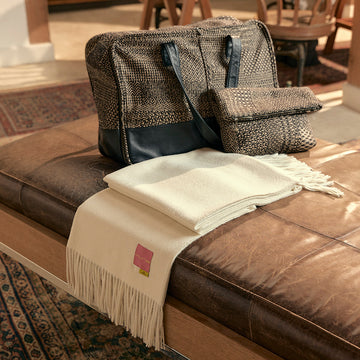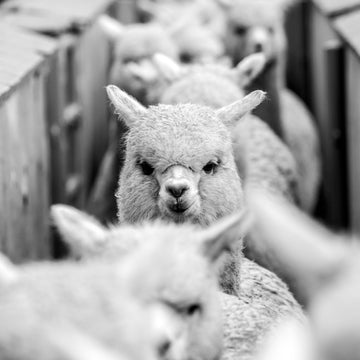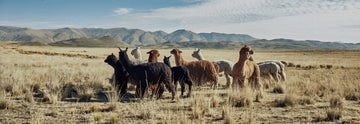SUSTAINABLE ALPACA
Alpacas are noble and generous animals, legendary and sensitive. In Peru, they are a national symbol dating back to 5,000 B.C. Currently, 80% of the world's population of this camelid resides in the Peruvian Andes. Each of these alpacas represents the work and progress of thousands of Peruvians living far from modern life. For them, raising alpacas means preserving a remnant of ancient history. For us, it is about keeping history alive and making each day our reason for being.
In addition to their cultural significance, alpacas provide a durable, sustainable, and unique fiber in a context where fashion is increasingly disposable, synthetic, and homogeneous. We believe there are four central reasons to promote and use this wonderful raw material.

|
ALPACAS ARE KIND TO THE LAND Alpacas only eat the tops of grasses and other plants. By not pulling them out from the ground, they minimally disrupt the vegetation and allow it to regrow. Their efficiency is particularly remarkable, as alpacas require less food than most other fiber-producing livestock. Moreover, they consume natural grasses, eliminating the need for land or water to cultivate their food. |
 |
 |
ALPACAS SAVE ENERGY Alpaca fiber comes in over twenty-two natural colors, originating from nine pure colors: white, light beige, light camel, beige, light brown, brown, gray, brown-black, and black, along with many other subtle shades and hues. This natural color variety reduces the need for dyeing, which is the most water, chemical, and energy-intensive process in textile production. Alpaca fiber is an excellent insulator for both warm and cold climates. Due to this, household products made from this fiber, such as carpets, blankets, bedspreads, and curtains, are highly recognized and useful. |
|
ALPACAS ARE ROOTED IN HISTORY The word "alpaca" is derived from the Aymara name "allpacu" or the Quechua names "pacos" or "pacoshas." Cave paintings from over 8,000 years ago depict the interaction between ancient Peruvians and alpacas. The use of alpaca fiber in textiles began around 2,500 B.C. and became increasingly important over time in ancient Peruvian cultures. For more than a million small alpaca producers in the central Andes of South America, these animals are a fundamental pillar for their subsistence. Alpacas are also an extremely significant element of cultural identity. |
 |
 |
ALPACA FIBER PRODUCTS ARE UNIQUE The thickness of alpaca fiber ranges from 18 microns to over 35 microns, making it possible to create all types of garments: from extremely fine and lightweight products to thick blankets with impressive thermal properties. The physical characteristics of alpaca fiber allow for the creation of durable products with superior performance in extreme climates, both hot and cold. |
However, our fascination with alpacas was born not only from their evident beauty and the history behind them, but also from their magical and unique fiber that is recognized worldwide. For us, the world of alpacas is full of lessons that we have decided to apply to everything we do. If you want to learn more about this majestic animal and its sustainability credentials, you can visit whyalpaca.com.







